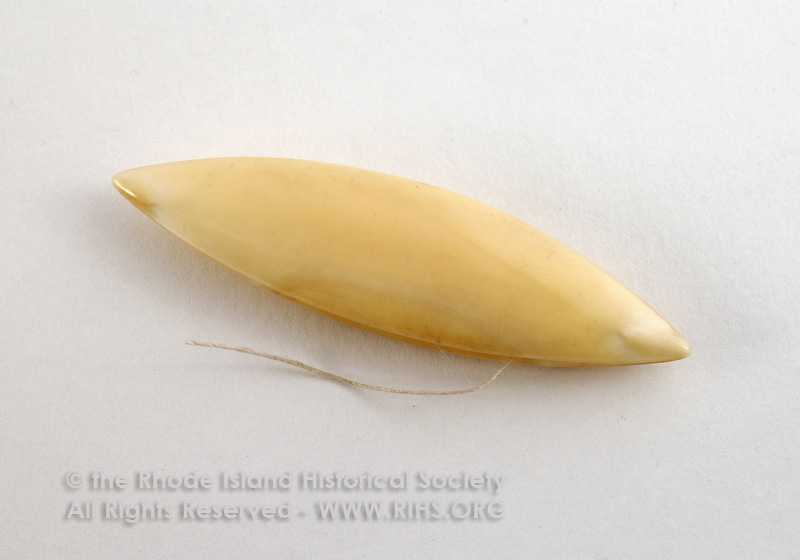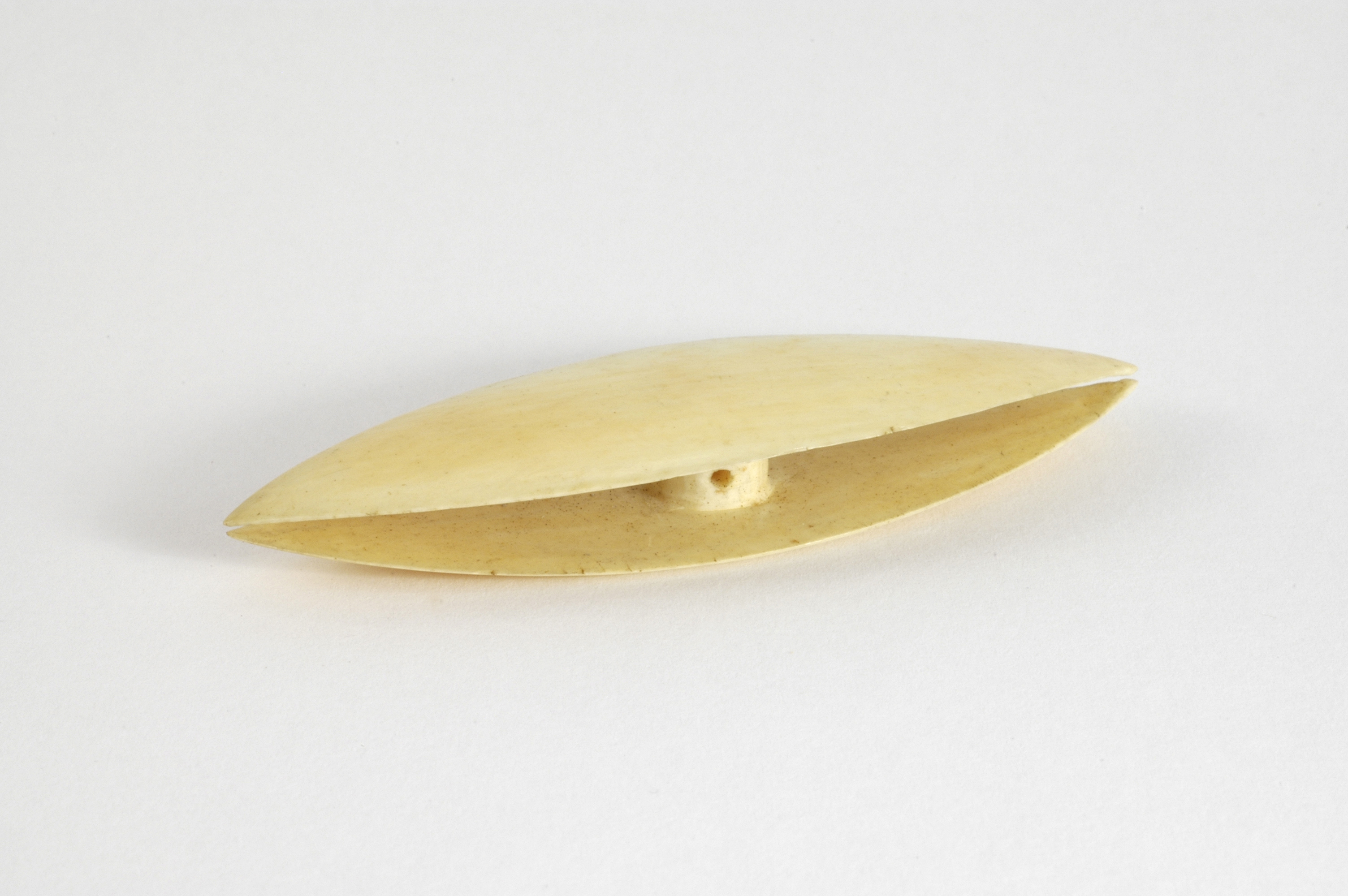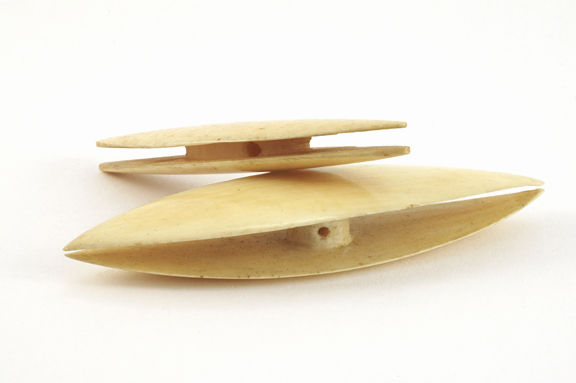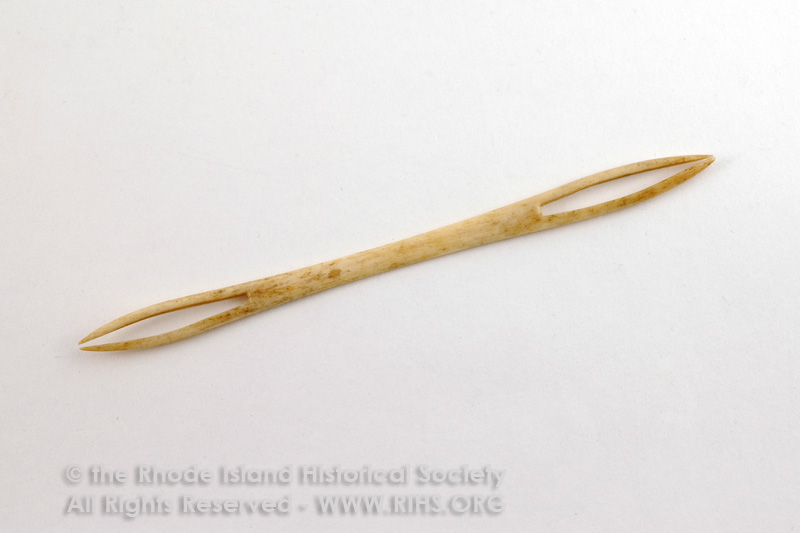Small shuttles made of bone, ivory, wood, silver and other metals can be found in the sewing boxes of women from the 17th Century through to today.
We have a two lovely examples of two different shuttle types in our collection, possibly used by Hannah Hartshorn Whitman for making netted fringe in the mid 18th century.

The first example is of the type where you wind the thread of silk, linen or cotton, around the central core joining the upper and lower eye shaped sections.

First you pass the thread through the small hole in the center of the core and tie a knot to keep the thread secure, then wind the rest of the thread around.

Carved and shaped by hand each shuttle is unique with differently shaped central core, but all have the same eye shaped main sections.

The second example is of the type that you wind the thread around the main shaft, passing through the eye shaped opening on either end.
The eye openings on either end are not closed, but are formed of two bent prongs that nearly touch at the top. This allows the thread to be more easily wound around the main shaft.
These shuttles were used to make fine netting. The netting could then be used to make curtains, veils, fringe, lace, bags, collars, cuffs. etc. For some it was a craft of leisure (like embroidering pocketbooks) while for others it was a livelihood.
By the 1840’s books were published in England and the United States just for patterns for knitting, embroidery, sewing and netting. Marketed towards those with leisure, many of these books contained patterns written with the assumption that the reader already knew the basic techniques required, learned durning her education (be that formal or informal). You can read one of the books that has written instructions on how to make decorative netting here: The Hand-Book of Decorative and Ornamental Needlework: Including Crochet, Knitting and Netting.
~ Dana Signe K. Munroe, Registrar

I may be mistaken, but the smaller shuttles are tatting shuttles that were developed in the 18th century, and are not used for netting. The long, forked shuttle is actually a netting needle used for fine, decorative netting. Hope this may be of help